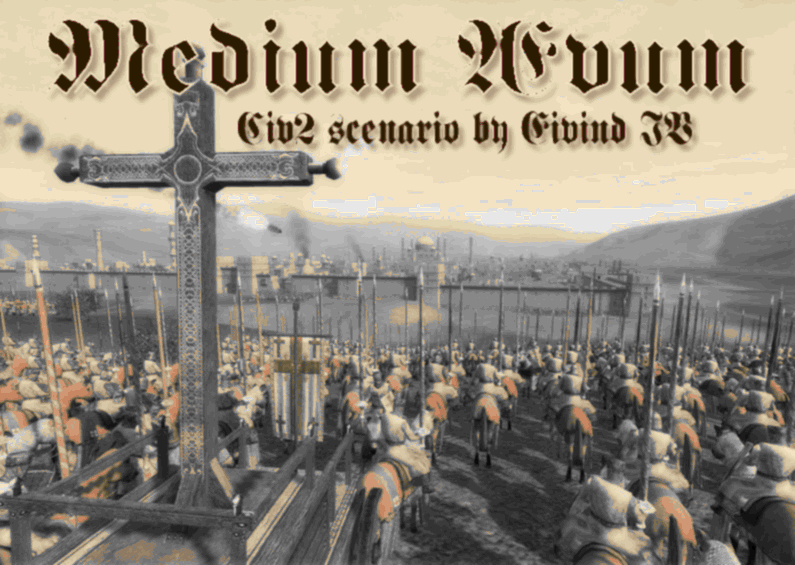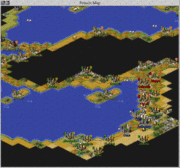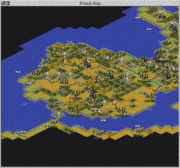Medium Aevum v1.2b: Difference between revisions
m (This is an MGE scenario.) |
|||
| (One intermediate revision by the same user not shown) | |||
| Line 1: | Line 1: | ||
[[Category:Eivind IV]] | [[Category:Eivind IV]] | ||
[[Category:Middle Ages]] | [[Category:Middle Ages]] | ||
[[Category:Civilization II: | [[Category:Civilization II: Multiplayer Gold Edition]] | ||
[[File:Title-medium.GIF]] | [[File:Title-medium.GIF]] | ||
| Line 126: | Line 126: | ||
== Downloads == | == Downloads == | ||
[[Media:Eivind_iv's_medium_aevum_1.2b.zip| Scenario Files]] | [[Media:Eivind_iv's_medium_aevum_1.2b.zip| Scenario Files]] | ||
Latest revision as of 10:36, 20 August 2012
Description
100 turns of pure feudalism (4 years per turn)!
Civs:
•1. French
•2. Anglo-Normans
•3. Holy Roman Empire
•4. Spanish
•5. Polish
•6. Hungarian
NB! Saracens are NOT playable!
Historical context
By the close of the eleventh century, Jerusalem had been in Muslim hands for over four hundred years. In 1095 Pope Urban II launched an unprecedented military campaign to seize it back – a ‘Crusade’ to purge the Holy Land of ‘the infidel’. Over sixty thousand Christian warriors would journey three thousand miles and for almost three years to reclaim the Holy City in the name of God.
But their adversaries, the Turkish warlords of the Middle East, would resist them every step of the way. In a series of epic battles and bloody massacres, tens of thousands would die as the crusaders inched ever closer towards Jerusalem. The first crusade finally endeded in 1099 - with many more to come!
The shadow of war between Christians and Muslims hang over us today, but it is a war that began nearly a thousand years ago. This clash of civilisations, were what characterised the Middle Ages (Medium Ævum).
Readme
•You start off as commander of either of the large Christian kingdoms in Europe, just after Jerusalem is secured in 1099. France starts with control over 3 Holy Land cities, as do the Anglo-Normans. The Spanish civ is a collection of the Iberian kingdoms into one, for obvious game play reasons. They will have a hard enough time as it is to repell any further Moorish incursions into their land. If the Spanish is AI controlled, the Moors may even break through into France, if the Reconquista fails...
•I chose to have the rather unorthodox civ's of Poland and Hungary in this scenario, rather than the usual Byzantine Empire or the Kievan Rus'. This as Poland and Hungary has a historic future, whereas the Byzantines are supposed to be pounded by the Turks anyway and the Kievan Rus' are supposed to succomb to the Mongols, which I can not recreate here due to lack of civ's. But do not think that a campaign in Slavonic territory will be a walk in the park. You will soon see that they are hard nuts to crack. Eventually the Mongols will also take it's toll on Europe's frontier. Also I included these civ's to balance out the obvious territorial advantage of the Holy Roman Empire.
•The Holy Land in general has several major objective cities, as this is were all the happiness wonders are located, together with other crucial wonders, originally intended for the Saracens, but which can be captured if you're a very good player. Both the Saracens and the Warriors are designed with goto events and kill unit events, to really make them a worthy adversary. If you neglect sending reinforcements to the Holy Land right off the bat, I will be surprised if you manage to hold the ground. I've designed the Saracens to really kick back if you try to invade more of their territory. You might find the Moors taking advantage of the power vacuum left in the Middle East if you manage to gain ground there, and vica verca...so take precautions before declaring any hasty crusades! I've also armed the Saracens with the Great Library wonder, so that they will always be on top of any breakthroughs made in Europe.
•Every 10th turn, all the Christian civ's will get a Crusader spawned next to Rome. Assemble these onto transporters and send them towards Saracen cities once you are strong enough. Feel free to send native wordly units to back up the holy crusaders. Several other hero units are spawned on random turns, both for you to enjoy and to curse. Negative events, such as the Inqusition, will happen twice in the course of the scenario for every civ. And once in the course of the game, even the population pollution generating tech of Automobile will be given to each civ, opening for the possebility of the Plague occuring.
•I have used Tundra and Glacier for Grassland and Plains, to avoid that the AI builds cities. These terrains obviously has the same values as the orginals, but here Grassland has resources, which is important for city growth and development. Take note of special terrain such as Trade Route and Monastery. They transform cities into imporant trade centres for your merchants or centres of growth and production for you citizens. These terrains have been deliberately placed near historic medieval trade routes and important real life medieval monasteries of various religious orders.
•The combat stats are based on John Ellis' Hundred Years' War, so if you are familiar with that scenario, you may find some similarities in regards to unit stats. Those combat stats are top notch, so I saw no reason to reinvent the wheel in that area.
•Since this is a scenario spanning over ca. 400 years (100 turns), the fraction leader at the start is not neccessarily the one that ruled in 1099, but the most famous king in that time period.
•If you have any questions or comments, feel free to PM me at Apolyton, or post them at the Apolyton thread: http://apolyton.net/forums/showthread.php?s=&threadid=173775
•Thank you for playing my scenario and good luck! :-)
House Rules
•No use of Crusaders against Christians, only versus the Saracens
•No building of Fortresses in adjecent to cities
•No map trading
•No building of cities (recreating razed ones allowed)
•No 'shipping' of castles/citadels
Papacy rules (MP games only):
•01. Each Christian civ has one Cardinal each. This collegium of Cardinal's must assemble to elect a new Pope every 10th turn (40th year). The Pope will be one of the players and this player may declare crusades against specific cities and excommunications on King's as he sees fit.
•02. Failure of civ's to join in a Crusade may result in excommunication at the discretion of the Pope. Excommunication in practice will mean that the civ in question will be embargoed and open for war declarations without fear of another excommunication.
•03. After the Holy Crusade is declared by the Pope, no civ exept Poland may ship their unit to the destination. On the third turn the other civ's may ship units from their ports. This will allow the peripheral civ of Poland to participate in crusades as well.
•04. The Pope may only declare one crusade during his reign and once the Crusade is succesful, it is always the Pope that originally called the crusade that will get the VPs.
•05. The Pope should defend his holy duty by seeing to it that Christian brothers do not fight agressive wars against each other and excommunicate King's who exercise exessive agressive warfare.
•06. An excommunication may be lifted by the Pope at any time, either by leniancy or by bribery. An excommunication may also be lifted if the excommunicated King captures Rome. If Rome is ever captured the conqueror may 'elect' a new Pope, his own Cardinal if he so wishes, and lift whatever excommunication that rested on the King's head. This Pope then sits the next 10 years as rule 1 describes. If someone who is not excommunicated captures Rome, he may still 'elect' a new Pope under the same circumstances.
•07. During crusades, civ's should enter alliances to enable other Christian civ's to ignore ZOC's.
•08. The owner of Jerusalem has two Cardinals.
•09. Cardinals may not vote on it's own civ for Pope.
•10. If the vote for a new Pope ends in a tie, then the civ that rules Rome will have a double vote.
Victory Points (MP games only):
•I. +6 VPs for capturing the city that the Pope called a crusade on. The papal civ get +3 VPs once this city is captured, but can not participate in the actual crusade. So the advantage for the Pope to call crusades, is that his civ will get +3 VPs when the others capture it. Crusade VPs will not be lost if the Saracens recapture it.
•II. +4 VPs for every Holy City captured (the cities that France and the Anglo-Normans hold at start) and Saracen cities of the size of 8 and above.
•III. +4 VPs for capturing Rome, Constantinople and Kiev (VPs lost again upon enemy recapture).
•IV. +2 VPs for capturing any city with a Wonder (VPs lost again upon enemy recapture). These VPs comes on top if these cities are §III-cities, effectively making them +6 VP-cities.
•V. +2 VPs for every Saracen city captured (VPs lost again upon Saracen recapture).
•VI. +2 VPs for every tech discovered (0 VPs for tech's received on conquest).
•VII. +1 VP for every trade route established.
•VIII. +1 VP for every enemy human city captured (VPs lost again upon enemy recapture).
•IX. -1 VP for every turn you are excommunicated.
•X. -1 VP for losing a city to the Saracens (VP NOT won back on recapture).
Screenshots



